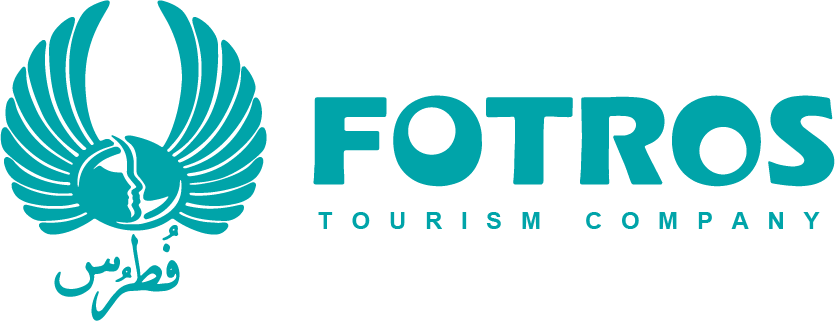
Medical Surgeries
Angioplasty and stent placement


Angioplasty and stent placement are medical procedures used to treat narrowed or blocked blood vessels, typically arteries, in a medical condition known as atherosclerosis. These procedures are primarily performed in patients with coronary artery disease (CAD) and peripheral artery disease (PAD).
Angioplasty: Angioplasty is a minimally invasive procedure that involves the use of a balloon catheter to widen a narrowed or blocked artery.
How angioplasty and stent placement work:
• A thin, flexible tube called a catheter is inserted through a blood vessel in the groin or wrist and guided to the site of the blockage using imaging techniques, such as fluoroscopy.
• At the site of the blockage, a deflated balloon at the tip of the catheter is inflated. This inflation compresses the fatty deposits against the artery wall, widening the artery and restoring blood flow.
Stent Placement: In many cases, a stent is used in conjunction with angioplasty. A stent is a small, mesh-like tube made of metal or a polymer that is mounted on a balloon catheter. When the balloon is inflated during angioplasty, the stent also expands and is left in place to hold the artery open.
There are two main types of stents:
Bare-Metal Stents (BMS): These are simple metal stents and are primarily used to prevent the artery from narrowing again in the immediate post-procedure period.
Drug-Eluting Stents (DES): These stents are coated with medication that helps prevent the artery from re-narrowing over a more extended period. They are more commonly used because they reduce the risk of restenosis (re-narrowing of the artery) compared to bare-metal stents.
These procedures are primarily used for two patient groups:
Coronary Angioplasty and Stent Placement: This is used to treat patients with coronary artery disease (CAD), which is the narrowing or blockage of the arteries that supply blood to the heart. These patients may experience chest pain or have had a heart attack Angioplasty and stent placement are used to improve blood flow to the heart muscle, relieve symptoms, and reduce the risk of a heart attack.
Peripheral Angioplasty and Stent Placement: This is used to treat patients with peripheral artery disease (PAD), which involves narrowing or blockages in the arteries outside the heart, often in the legs. These patients may experience symptoms such as leg pain, numbness, or difficulty walking due to reduced blood flow.


Angioplasty and stent placement can improve blood flow to the affected limbs and alleviate symptoms.
These procedures are typically less invasive than traditional open surgery and can lead to quicker recovery times. However, their appropriateness for a specific patient depends on their individual medical history, the location and severity of the blockage, and other factors. Patients should discuss their options and the potential risks and benefits with their healthcare provider to determine the most suitable treatment plan.


Before Angioplasty and Stent Placement:
Medical Evaluation: Before the procedure, your healthcare provider will conduct a thorough medical evaluation, including reviewing your medical history, performing a physical examination, and conducting various tests such as angiography to assess the extent of the blockage.
Fasting: Typically, you will be instructed not to eat or drink anything for a certain period before the procedure. Your healthcare team will provide specific instructions regarding fasting.
Clothing: Wear comfortable clothing and avoid wearing jewelry or other accessories. You will be asked to change into a hospital gown.
Transportation: Arrange for someone to drive you to and from the hospital or medical facility because you may not be fit to drive immediately after the procedure.
Medication Review: Inform your healthcare provider about all the medications you are taking, including prescription drugs, over-the-counter medications, and any herbal supplements. They may instruct you to temporarily discontinue or adjust some of these medications before the procedure.
Informed Consent: Your healthcare provider will explain the procedure, potential risks, and benefits. You'll need to sign a consent form indicating that you understand and agree to proceed.
After Angioplasty and Stent Placement:
Recovery Area: After the procedure, you'll be monitored in a recovery area for several hours. You'll need to lie flat and keep the leg used for the catheter insertion still for a period of time to prevent bleeding.
Pain Management: You may experience some discomfort at the catheter insertion site. Pain medication can be prescribed to manage this.
Activity Restrictions: Your healthcare provider will provide instructions regarding physical activity. You may need to limit strenuous activities for a period of time.
Medication: You'll be prescribed medications to prevent blood clots and manage other risk factors. It's important to take these medications as directed.
Diet and Lifestyle: You'll receive guidance on dietary changes and lifestyle modifications to improve your heart health. This may include dietary restrictions, weight management, and smoking cessation if applicable.


Follow-up Appointments: Regular follow-up appointments are crucial to monitor your progress, stent function, and overall heart health.
Rehabilitation: In some cases, cardiac rehabilitation programs may be recommended to help with recovery and heart health improvement.
Complication Monitoring: Be vigilant for signs of complications, such as chest pain, shortness of breath, excessive bleeding, or infection at the catheter insertion site. Contact your healthcare provider if you experience any of these symptoms.


Why Iran:
Iran has gained recognition as a destination for medical tourism, including angioplasty and stent placement procedures for foreign patients, due to several reasons:
High-Quality Medical Facilities: Iran boasts a robust healthcare system with modern, well-equipped hospitals and clinics that meet international standards. Many of these facilities are equipped with state-of-the-art technology for cardiovascular procedures
Skilled Medical Professionals: Iran has a highly trained and skilled medical workforce, including cardiologists, interventional radiologists, and support staff who are experienced in performing angioplasty and stent placement procedures.
Cost-Effective Healthcare: One of the main attractions for medical tourists is the affordability of medical treatments in Iran. The cost of angioplasty and stent placement is often significantly lower in Iran compared to Western countries, making it an appealing option for patients seeking quality care at a reasonable price.
Short Waiting Times: In many Western countries, patients may face long waiting times for non-emergency procedures. In contrast, Iran often provides quick access to medical services, reducing the time patients must wait for their treatments.
High Success Rates: Iranian medical professionals have a proven track record of success in performing angioplasty and stent placement procedures, and they often achieve excellent outcomes.
Multilingual Healthcare Providers: Many healthcare providers in Iran can communicate effectively in English and other languages, facilitating clear communication with international patients.
Cultural and Historical Attractions: Iran offers a rich cultural experience and has many historical sites and tourist attractions that can make a visit more enjoyable for medical tourists and their companions.
Note that while Iran has gained a reputation for medical tourism, there are some considerations to keep in mind:
Travel and Visa Requirements: International patients should be aware of the travel and visa requirements to visit Iran and plan accordingly.
Pre- and Post-Operative Care: Patients should consider how they will manage pre-and post-operative care, including follow-up appointments and recovery support, which may require additional time in Iran.
Language and Cultural Differences: While many healthcare providers can communicate in English, patients may still encounter language and cultural differences, which can affect the overall experience.


Research and Due Diligence: Patients should thoroughly research the specific hospital or clinic they plan to visit and consult with their healthcare provider at home before making any decisions.
The price of angioplasty and stand replacement in Iran depends on the hospital., the cost of this operation in Iran is about 2,000$ and 2700$. Angioplasty is performed in the US at a price between 32,100 and 32,300.
Surgery Details
 Anesthesia: general
Anesthesia: general Recovery: 24 hours
Recovery: 24 hours Duration of procedure: 1 hour
Duration of procedure: 1 hour Hospital Stay: 1 day
Hospital Stay: 1 day Back to work: about 1 /2 weeks
Back to work: about 1 /2 weeks


Our services include:
![]() our online services include: quotes and consultation
our online services include: quotes and consultation
![]() Planning the highest word-level medical trips and quality hospitals and medical centers according to the patient's request and budget.
Planning the highest word-level medical trips and quality hospitals and medical centers according to the patient's request and budget.
![]() Appointing treatments by the most skilled and experienced doctors.
Appointing treatments by the most skilled and experienced doctors.
![]() Airport pick-up/drop off, check-ups, accompanying translator, book hotel (for patients and their families)
Airport pick-up/drop off, check-ups, accompanying translator, book hotel (for patients and their families)
![]() Pre-hospitalization / post-hospitalization care services
Pre-hospitalization / post-hospitalization care services
All-Inclusive Medical Travel Packages
based on your budget, our team will assist you in choosing the best hotels, doctors, and medical centers. Our packages include:
 Airport Pickup Services
Airport Pickup Services Airport Dropoff services
Airport Dropoff services Hotel
Hotel Ticket
Ticket visa
visa translator
translator Transfer
Transfer SIM Card
SIM Card Sightseeing
Sightseeing


 why Iran
why Iran
Patients may choose to have abdominoplasty (commonly known as a tummy tuck) in Iran for a variety of reasons
Cost, Quality of Care, Privacy and Discretion, Combined Tourism, no Waiting Times
![]()
Fotros is an Iranian health tourism company with a professional team consisting of a support team and word-level doctors in medical and cosmetic surgeries like Neurosurgery, Rhinoplasty, Breast cosmetic surgeries, Liposuction, tummy tuck, etc.















 why Iran
why Iran